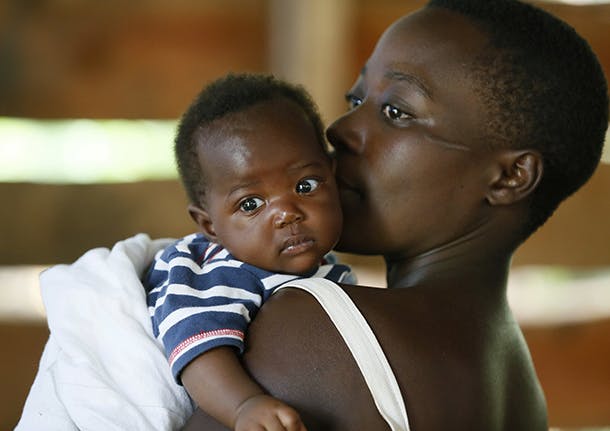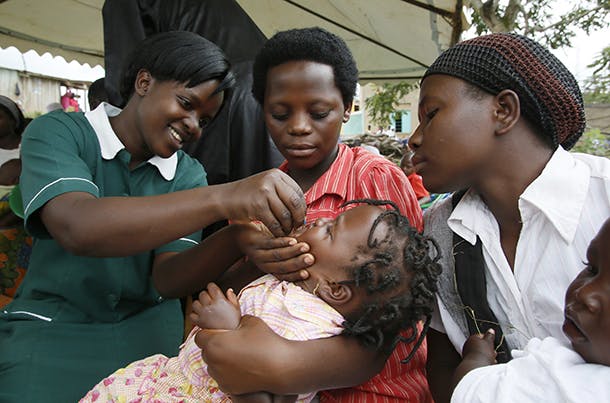
The last 15 years saw significant progress in reducing childhood deaths – globally, the number of deaths fell from 12.7 million in 1990 to 6.3 million in 2013. Promisingly, this progress accelerated in recent years – from 1.2% per year during 1990–1995 to 4% during 2005–2013. The reduction of measles deaths by 79% since 2000 has been the single most important contributor to child mortality reduction under Millennium Development Goal 4. Despite these impressive gains, we are not saving lives as quickly as we need to and we are still far from the two-thirds reduction in childhood deaths that we hoped to achieve by 2015.
Sustainable Development Goal 3 focuses on ensuring healthy lives and promoting health and well-being for people worldwide. To accomplish these targets by 2030, the World Health Organization is tailoring vaccination strategies to meet specific situational challenges, continuing monitoring and evaluation efforts, and finding new ways to simplify vaccine processes in the field to make them more available and affordable.
Polio is a great example of a global effort that is part of the Sustainable Development Goal 3 mission. Polio cases are now down from over 350,000 cases per year in 1988 to fewer than 100 cases in 2015. That is a 99.9% reduction in polio cases. However, the fight for polio eradication is still very urgent, and the world has never been in a better position to rid itself of the disease once and for all. According to UNICEF, if polio persists, it could result in a global resurgence of 200,000 new cases every year, within 10 years. Polio anywhere is a threat to children everywhere.

On September 20, during the same week when the United Nations and leaders are gathering, New York City will commemorate the 100 year anniversary of the 1916 New York polio outbreak. This outbreak was a devastating event in the history of New York City and the United States that – due to the lack of awareness – took the lives of 6,000 and left thousands more paralyzed across the nation.
This was a time when mothers across the country were telling their children not to swim in public pools even in the stifling hot summer heat for fear of contracting polio. This 100 year anniversary is a key time to reflect on the progress made over the past century and look ahead to the work remaining to be done in countries like Afghanistan, Pakistan, and Nigeria where polio still remains.
Starting now until World Polio Day on October 24, the Shot@Life campaign is challenging partners and volunteers alike to walk or run a 5K and fundraise to support completely erasing polio from our world. For more information, visit the Race to Erase website.



 View All Blog Posts
View All Blog Posts